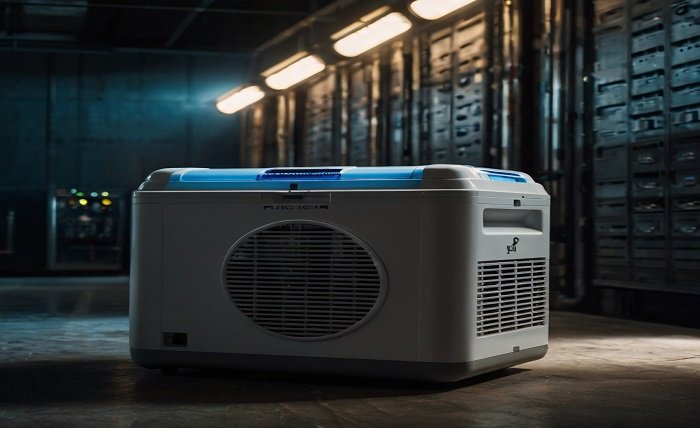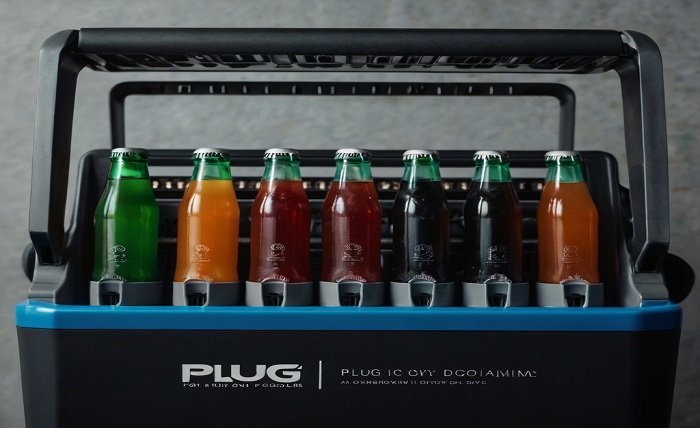A plug-in cooler is an incredible device for on-the-go food and drink cooling. A plug in cooler offers simplicity and efficiency that typical coolers can’t match, whether you’re planning a road trip, an outdoor excursion, or just needing more cooling capacity during a backyard party. In this guide, we’ll go over what makes a plug-in cooler unique, important features to think about, and some of the best models on the market right now.
Read more: yeti cooler
What is a Plug-In Cooler?

A plug-in cooler is portable air conditioning equipment that runs on electricity, either from a conventional wall outlet (110V AC) or the power outlet in a car (12V DC). A plug-in cooler uses electricity instead of ice to maintain its contents’ coldness. Rather, it uses thermoelectric technology or a compressor to keep the temperature constant, which makes it a dependable choice for lengthy outdoor activities or travels.
The advantages of plug-in coolers
The ease that a plug-in cooler provides is one of its key benefits. It offers reliable cooling, and you won’t need to worry about having to keep adding ice to it. Depending on the model, a plug-in cooler can also function as a portable freezer or refrigerator. It’s perfect for road trips, boating, camping, and even tailgating because of its versatility.
Plug-In Cooler Types
Plug-in coolers come in two primary varieties: thermoelectric and compressor-based. A thermoelectric plug-in cooler is the most suitable for short travels due to its lighter weight and more affordable price. But in extreme weather, it could not function as effectively. A compressor-based plug-in cooler, on the other hand, is more potent and capable of maintaining lower temperatures even in scorching conditions, which makes it ideal for longer excursions and harsher settings.
Important Qualities to Consider in a Plug-In Cooler
A plug-in cooler should have a variety of features that you should consider. These consist of size, portability, durability, energy efficiency, and cooling capacity. Choose a plug-in cooler based on your needs, whether you want a small one for quick journeys or a bigger one for longer camping excursions. Additionally, check for adjustable temperature settings on the plug-in cooler. Maintaining the perfect temperature for various types of food and beverages is crucial.
Leading Plug-In Cooler Brands
There are a few companies that stand out in the industry for making superior plug-in coolers. Manufacturers such as Coleman, ARB, and Dometic are renowned for producing robust and effective versions. For instance, people frequently commend a Dometic plug-in cooler for its potent cooling capabilities and cutting-edge features. Similar to this, off-road aficionados love ARB plug-in coolers for their dependability and tough design. For casual users, Coleman also provides reasonably priced plug-in coolers.
How to Make the Most of a Plug-In Cooler
You must use your plug-in cooler properly to maximize its benefits. Before adding your belongings, pre-cool the cooler to help keep the temperature stable. A full cooler keeps cold longer than an empty one, so stuff it full. Additionally, try not to open the cooler too often, as this reduces efficiency by letting warm air in. Lastly, connect your plug-in cooler to a reliable power source to prevent any cooling pauses.
The Best Circumstances to Use a Plug-In Cooler
In many cases, a plug-in cooler is the best option. A plug-in cooler may keep drinks and food cold for the duration of a road trip. It’s also ideal for camping, as regular coolers might not be able to keep food cold enough for several days. A plug-in cooler also comes in handy for fishing or boating excursions, preserving the freshness of your catch until you return home. A plug-in cooler guarantees you have an endless supply of chilled beverages, even for outdoor gatherings.
Tips for Taking Care of Your Plug-In Cooler
For your plug-in cooler to last a long time and function properly, maintenance is essential. Use a little soap and water to clean the interior after every use. Regularly inspect the connectors and power cord for signs of wear and tear. To avoid overheating, make sure the ventilation area of your plug-in cooler—if it has one—is clear of dust and debris. Proper storage is also important; store your plug-in cooler in a dry, cool location when not in use.
Which is better, a plug-in cooler or a traditional cooler?
Your needs will determine which plug-in cooler is best for you when comparing it to a standard ice cooler. A plug-in cooler, which doesn’t require ice, provides steady cooling, making longer excursions more convenient. But conventional coolers are usually less expensive and don’t need energy, so they’re perfect for shorter trips or places without access to electricity. If you regularly go on long outdoor excursions, a plug-in cooler is probably a better buy.
Selecting the Ideal Plug-In Cooler for Your Needs
The best plug-in cooler for you will depend on several things, such as your spending limit, the kinds of activities you enjoy, and the space you have available. For those seeking a cost-effective and small solution, a thermoelectric plug-in cooler can be the best choice. Compressor-based models are well worth the expenditure for individuals who require higher cooling power and longevity. Choose a plug-in cooler model based on your demands and how you’ll use it most frequently.
In summary
Anyone who enjoys being outside or needs a dependable cooling option on the go will find a plug-in cooler to be an indispensable tool. No matter where your travels take you, you can always enjoy fresh food and cold beverages with the correct plug-in cooler. You can get the most out of your plug-in cooler and improve your outdoor experiences by taking into account the important features, comprehending the advantages, and selecting the model that best suits your requirements.
Read more: technewztop
FAQ
What distinguishes a compressor-based plug in cooler from a thermoelectric cooler? Although a thermoelectric plug-in cooler is less expensive and lighter, it could not function properly in sauna-like conditions. On the other hand, a compressor-based plug in cooler can serve as a freezer or refrigerator and provide stronger cooling.
Is it possible to use a plug in cooler as a freezer? Indeed, many plug in coolers equipped with compressors offer temperature settings that enable them to function as freezers.
How much time can a car battery power a plug in cooler? The power consumption of the cooler and the capacity of the automobile battery determines the runtime. On a fully charged automobile battery, a plug-in chiller can typically operate for several hours without totally draining it.
Is there an energy-efficient plug in cooler? Most modern plug in coolers incorporate energy-saving features such as eco modes and adjustable thermostats to reduce power consumption.
Does a plug in cooler require pre-cooling before use? Yes, pre-cooling a plug in cooler makes it easier to get to the right temperature and helps it stay there longer when filled with food and beverages.

